Preserving the Window Layout
A window layout is an arrangement of windows in the graphics display, which consists of one or more modes. They can be used to save, restore, and edit a specified visual display.
| 注 | Since 2020 a new type of object-oriented layout view is available (see Assembling Layout Views). The legacy layouts described in this section are hidden from the GUI beginning with Simcenter STAR-CCM+ 2406. However, for backward compatibility they can still be generated by running macros that were recorded with their creation. Additionally, simulation files that were saved with these layouts in versions 2402 and previous retain them when restored in the current release. You are advised to copy your legacy layouts to the newer objects. See Copying Pre-2020.1 Layouts to Layout Views. |
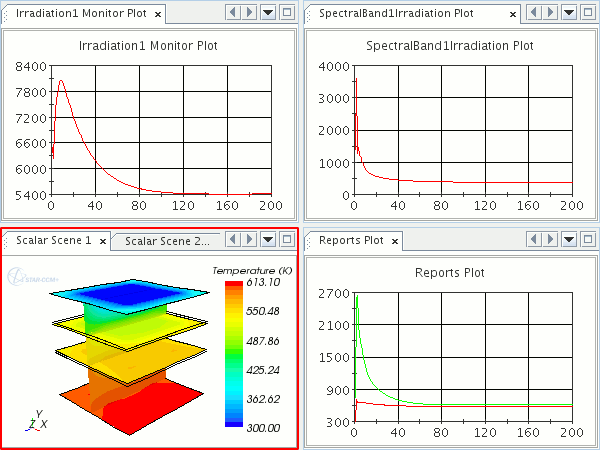
Modes can also be undocked from the graphics display. You can save the position on the screen with the layout.
Saving a Window Layout
Saving a window layout makes the current graphics display available for restore. When saved, a window layout can be edited to meet visualization requirements.
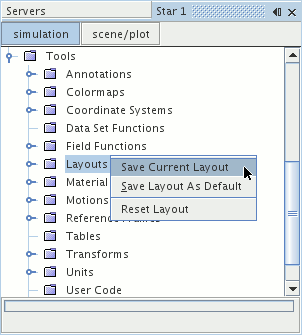
A layout is added to the manager.
To save the current window layout as the default layout, right-click the manager, and select .
Alternatively, from the menu bar, select .
This action overwrites the default layout under the manager.
To save the layout as the default layout when the simulation is saved, from the menu bar, select . Then in the Options dialog, select the node, and activate the option.
Restoring a Window Layout
Restoring a window layout restores a saved layout in the graphics display.
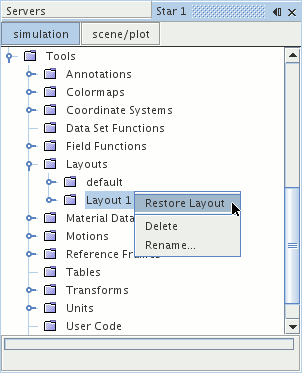
The saved window layout is shown in the Graphics window.
Alternatively, to restore only the default layout, from the menu bar, select .
Editing a Window Layout
Once saved, window layouts can be edited to meet visualization requirements. Editing consists of adding, replacing, or removing scenes and plots from the layout modes.
Adding a Scene or Plot to Layout Modes
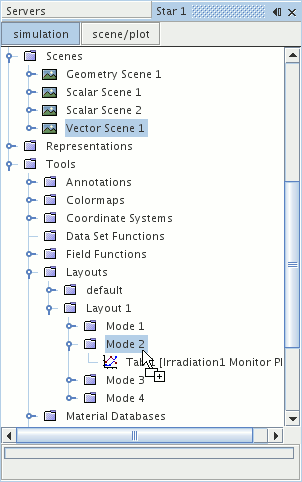
A node representing the scene or plot is then added under the manager. The graphics display is updated when the scene is restored.
Replacing a Scene or Plot in Layout Modes
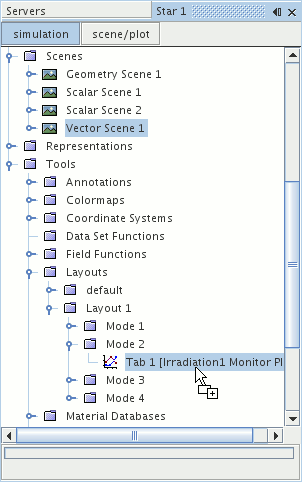
A node representing the scene or plot then replaces the original node. The graphics display is updated when the scene is restored.
Removing a Scene or Plot from Layout Modes
To remove a scene or plot from a layout mode, right-click the node in the layout mode representing the scene that you want to remove, and select .
The node representing the scene or plot is then removed from the manager. The graphics display is updated when the scene is restored.
Copying Pre-2020.1 Layouts to Layout Views
To replicate the contents of a layout under in a layout view:
- In , restore the old layout.
- Create a layout view with panes that map to the arrangement of windows in the old layout. See instructions for creating a layout view.
- In the old layout, click in one of the scene or plot displays to make the corresponding node active in the object tree.
- Drag that node into the pane of the layout view that corresponds to the scene or plot's position in the old layout.
- Repeat the previous two steps until the layout view matches the old layout. To refine the appearance of the layout view, see Creating and Modifying Layout Views.